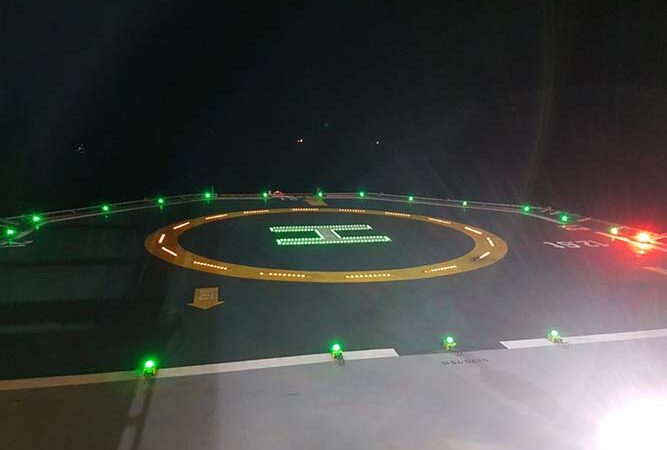Lights
If a heliport needs to operate at night the heliport needs lighting installed. A few of those lights are;
– Heliport perimeter lights, those lights are installed flush with the ground on the TLOF area. These lights are a standard green color.
– Lighting should never cause an obstruction that can impact the helicopter. That is why light on the TLOF is not allowed to be higher than 2 inches.
– Another sort of light that could be used is a floodlight. These lights are not allowed to interfere with the heliport lights. The floodlights should be off during touchdown or lift-off. These lights are mostly used for work on the ground at night.
– A windsock is also required to have around a heliport. This is to help know the wind speed and direction.
– You also have HAPI, PAPI this is a guidance system that helps the pilot to know how high or low the pilot needs to fly to land properly
Obstructions
An obstruction is a fixed object that is extending above an obstacle protection surface. And should be lighted if the runway is used at night.
The marking and/or lighting of obstacles is intended to reduce hazards to aircraft by indicating the presence of obstacles.
Low-intensity obstacle lights. Type A or B should be used where the object is a less extensive one and its height above the surrounding ground is less than 45 m.
An obstruction light and an aircraft warning light is the same thing.

